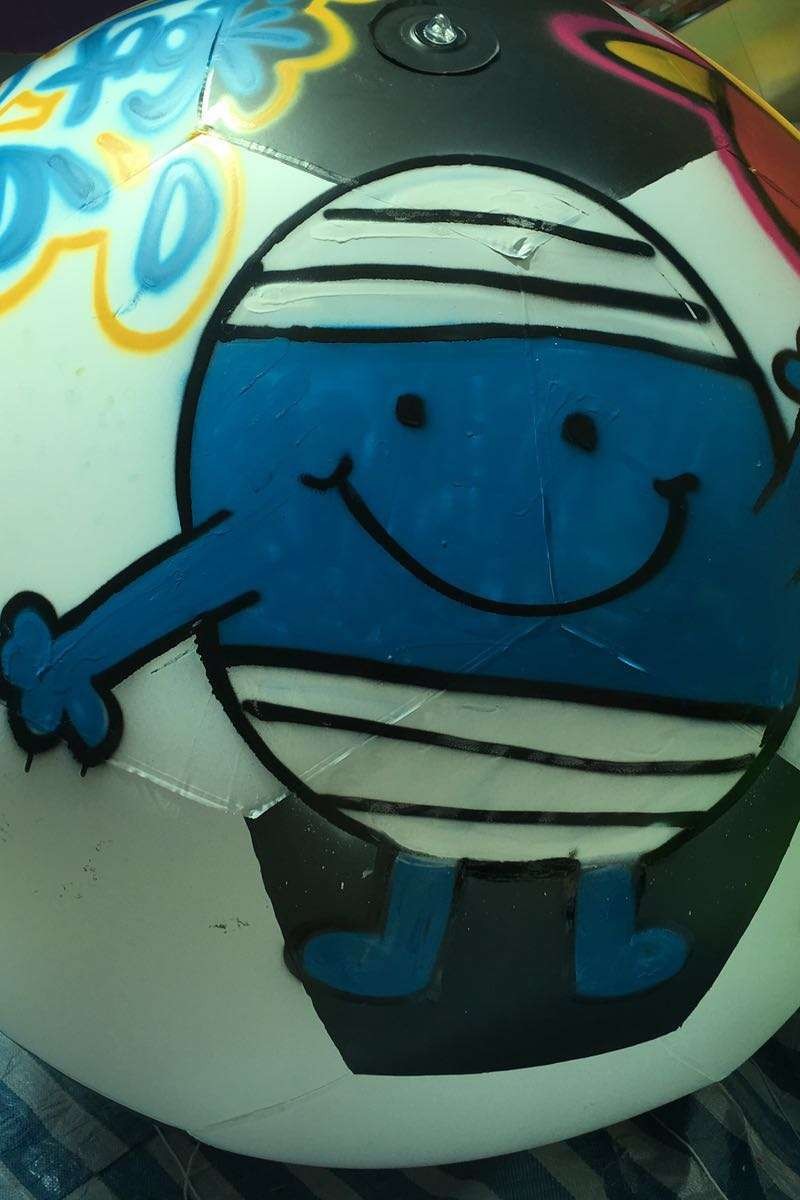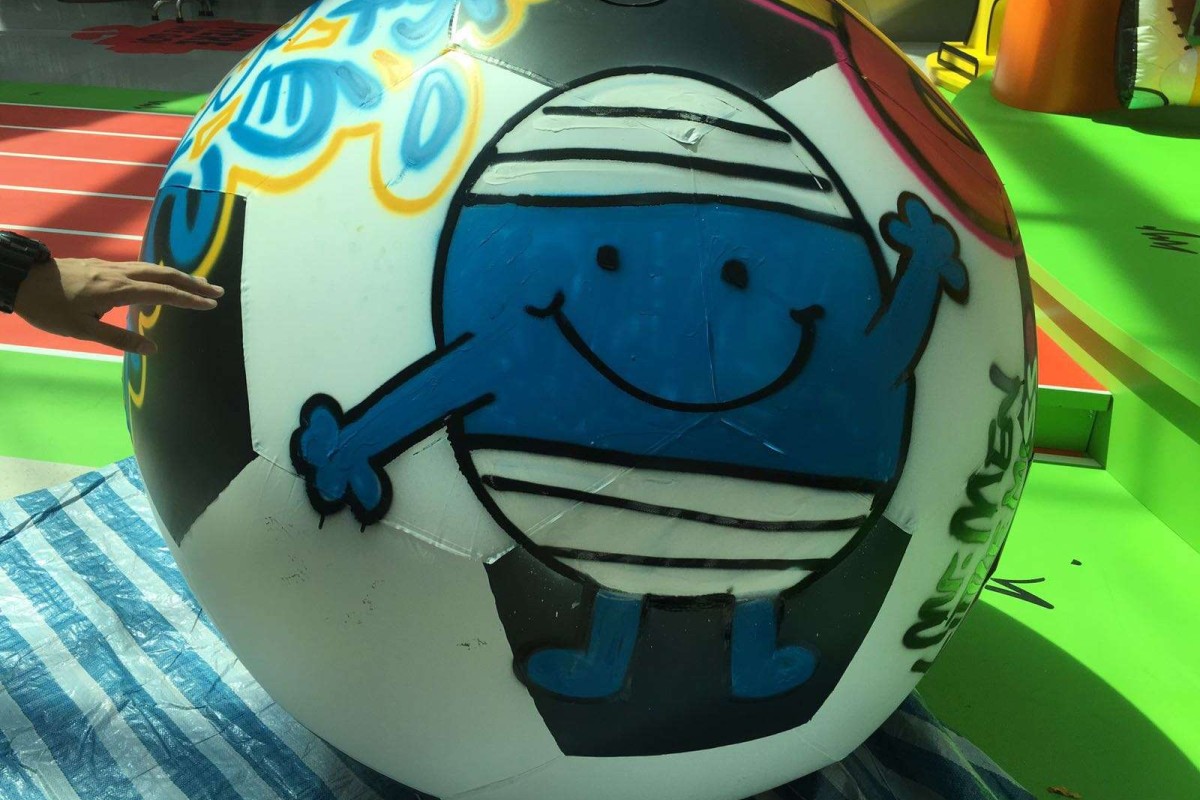
Hong Kong’s graffiti scene is about more than illegal spray painting, says artist Uncle Tsang
It might not be legal in Hong Kong, but there’s more to the art of vandalism than meets the eye
 Mr Bump made it through the day with the JRs unharmed!
Mr Bump made it through the day with the JRs unharmed! Street art has been around in some form or another for thousands of years. One well-known graffiti artist, Tsang Chiu-chong, or Uncle Tsang, as he is more commonly known, is taking over Sunshine City Plaza in Ma On Shan this summer to put on some graffiti workshops and talk about street art’s place in the art world. Young Post junior reporters Eunice Yip, Yam Wai-shan and Nicholas Ng tagged along to one of his workshops to find out what he had to say.
While graffiti is technically illegal in Hong Kong, Uncle hopes to change people’s perception of it. Uncle Tsang is a very famous Hong Kong street art artist, whose nickname stems from the fact that he looks a little bit older than his friends of the same age.
Uncle studied visual communication at college, and worked as a graphic designer after graduation. He first came across graffiti in 2001, as his friends persuaded him to try something new, and he hasn’t looked back. In 2009, he founded his own workshop called After Workshop. The name refers to when people are typically available to paint – after work – and the purpose was for entertainment and as a stress reliever.
Unlike in the US, Uncle says graffiti doesn’t have a very big presence in Hong Kong yet, as many people don’t understand it. “Quite frankly, this makes doing street art in Hong Kong very challenging,” says Uncle. “Hongkongers have very high expectations for art and creativity, especially if the artwork will be displayed in public areas. If it isn’t persuasive, they’ll dislike it,” says Uncle.
And Uncle thinks Hongkongers don’t appreciate how much thought and work goes into street art. It takes artists a lot of time to research the background, theme, brand and everything else related to graffiti.
“I think artwork resembles the creator a lot, and it’s a way for me to expresses myself,” says Uncle. He is delighted when someone appreciates his graffiti work, instead of his brand.
Eunice Yip
Street art is a lot more diverse then it seems. Uncle told us that one of his most memorable projects was when he was involved in creating a massive painting on the wall of a seven-storey building overseas. It took him an entire month to fine tune and complete his masterpiece. Uncle thinks that projects like this are simply impossible in Hong Kong as graffiti and street art are not as popular or well received here as they are in other countries. But he hopes that will change soon. “I really hope there will be opportunities for large-scale projects in Hong Kong in the future,” he says.
Street art is usually stereotyped as illegal, back-alley painting that is done under the cover of darkness. But Uncle points out that any type of art or decoration can be considered street art. “Street art doesn’t only refer to things that are illegal. A sticker or a poster stuck on a wall can also be street art. In short, any artwork which is displayed in a public area is street art. ”
Knowing that art can take multiple forms and exists in all environments, not just in galleries and museums, is the first step towards appreciating it.
Yam Wai-shan
Graffiti is often looked upon as something difficult, that only a skilled few can master. But the truth is, making beautiful graffiti involves just three main steps: drawing lines, fills, and fading.
Filling is essentially “colouring in”, and fading is blending two or more colours together to make a smooth transition between the two. We started off by drawing short, straight lines on a rubber ball, but even drawing a straight, thin line is difficult, because the thickness of the line is determined by how much pressure you apply with your finger when spraying. I pressed the cap (the top part of the canister) a little too hard ... and ended up with a big lump of paint at the start of my line. But press too soft, and you end up with an undefined coloured cloud instead. So, how well you control your hand and strength determines how beautiful the art will be.
As we soon found out, spray painting a rubber ball was extraordinarily difficult, due to the paint dripping down the sides. Imagine trying to paint a moving sphere, whilst keeping your hand steady and maintaining consistent paint strokes. Not to mention the lumps and bumps on the surface that made drawing straight lines even harder! Graffiti taught us to plan before spraying; to visualise the end goal and put our coordination to the test as well.
Our final product – a deformed, smiling Mr Bump – was the result of our struggle with the canisters. But, as Uncle told us: “Graffiti is representative of the artist.” Perhaps that reflects the idea that us “artists” have a lot to learn.
Nicholas Ng